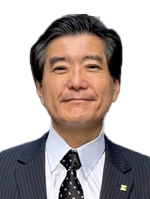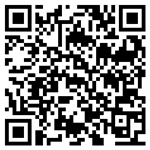80 years since the atomic bombing:
Promotion of Peace Studies for Children in Japan in FY2025
Shiro Tani
Vice-Chairperson, Hiroshima Peace Culture Foundation
(Mayors for Peace Secretariat)

Shiro Tani
Vice-Chairperson, Hiroshima Peace Culture Foundation
(Mayors for Peace Secretariat)
In September last year, we called on all member cities of the Mayors for Peace in Japan to participate in the Program for Peace Studies in Hiroshima, which will provide children throughout Japan with opportunities for deep and interactive learning as we approach 2025, marking the 80th year since the atomic bombing.
We mentioned three points:
(1) the urgency and vital importance of raising the awareness of peace among the younger generation, as hibakusha and World War II survivors are getting very old and decreasing;
(2) the significance of fostering a sense of respect for peace among children who take the peaceful days for granted by giving them a realistic experience of the A-bomb damage, which is the complete opposite of peace, in an A-bombed city;
and (3) the establishment of a subsidy system by the city of Hiroshima for the dispatch expenses of each city, with assistance from the national government (assuming one-third of the amount is subsidized).
As a result, as of December 13 last year, we had already received applications for participation from 1,607 people (1,187 children and 420 staff, etc.) from 90 member cities in 25 prefectures throughout Japan, far exceeding the number for FY2024. In addition, more than 20 member cities are now actively considering participation. We hope that other member cities will consider joining us as well, as we are still open to accepting participants from now on.
Last December, I gave a presentation on school excursions to Hiroshima titled "A Moving Experience for Children" at the Kitatama Naka District junior high school principals' meeting in Tokyo.
In my presentation, I spoke about actual initiatives at junior high schools in the Tama region, including (1) a curriculum to "nurture the ability to live" that is organized and implemented using 40 to 50 hours of integrated studies classes on themes such as life, human rights, environment, and peace consistently for three years; (2) the fact that the school excursion to Hiroshima is positioned as the culmination of this curriculum; (3) the fact that previous school excursions, while meaningful as historical tours, were more of sightseeing trips and did not build on the contents of the three-year study as the school excursion to Hiroshima did; (4) the benefits of the three years of study include a transformation in the students' awareness of peace, as well as an improvement in their sense of independence and respect for others and society; and (5) positive evaluation from the parents.
We also explained the contents of this report to related organizations throughout Japan, and received the following three suggestions: (1) overtourism has been causing serious problems for school excursions since the pandemic, and there is a movement to rethink the future of school excursions themselves; (2) the National Curriculum Guidelines also call for school excursions to deepen experiences by clarifying the purpose and relating them to comprehensive study classes; and (3) with the international situation becoming increasingly tense, interest in peace study is growing, and study that addresses comprehensive themes such as peace, life, human rights, and the environment throughout a three-year period has the potential to become a leading case in the future.
At the principals' meeting, I also explained two 2025 projects being considered by our Foundation. The first is a 'Teachers Gathering to Consider Peace Studies', which includes (1) presentations and discussions among teachers on case studies of the three-year curriculum and the culmination of the curriculum, including the implementation of the Hiroshima school excursion, and (2) an experience of the peace study program in Hiroshima. The second is the Designation System for Peace Study Monitoring Schools (20 schools × 5 years = 100 schools to be designated), which includes (1) support for prior study, (2) support for peace study programs in Hiroshima, and (3) grants (estimated at 3,000 yen per student). Considering the current situation where Hiroshima school excursions are mainly from schools in western Japan, as a trial for this project we are considering targeting public junior high schools in Tokyo and five prefectures in the Kanto region (Ibaraki, Tochigi, Gunma, Saitama, and Chiba). All interested schools and teachers are encouraged to actively participate.
Hiroshima Peace Memorial Museum is considering developing an exhibit for children to learn about peace, aiming for FY 2027.
On the occasion of the 80th year since the atomic bombing, we would like to further promote the creation of a system and framework to raise the peace awareness of the younger generation.
As a result, as of December 13 last year, we had already received applications for participation from 1,607 people (1,187 children and 420 staff, etc.) from 90 member cities in 25 prefectures throughout Japan, far exceeding the number for FY2024. In addition, more than 20 member cities are now actively considering participation. We hope that other member cities will consider joining us as well, as we are still open to accepting participants from now on.
In my presentation, I spoke about actual initiatives at junior high schools in the Tama region, including (1) a curriculum to "nurture the ability to live" that is organized and implemented using 40 to 50 hours of integrated studies classes on themes such as life, human rights, environment, and peace consistently for three years; (2) the fact that the school excursion to Hiroshima is positioned as the culmination of this curriculum; (3) the fact that previous school excursions, while meaningful as historical tours, were more of sightseeing trips and did not build on the contents of the three-year study as the school excursion to Hiroshima did; (4) the benefits of the three years of study include a transformation in the students' awareness of peace, as well as an improvement in their sense of independence and respect for others and society; and (5) positive evaluation from the parents.
We also explained the contents of this report to related organizations throughout Japan, and received the following three suggestions: (1) overtourism has been causing serious problems for school excursions since the pandemic, and there is a movement to rethink the future of school excursions themselves; (2) the National Curriculum Guidelines also call for school excursions to deepen experiences by clarifying the purpose and relating them to comprehensive study classes; and (3) with the international situation becoming increasingly tense, interest in peace study is growing, and study that addresses comprehensive themes such as peace, life, human rights, and the environment throughout a three-year period has the potential to become a leading case in the future.
At the principals' meeting, I also explained two 2025 projects being considered by our Foundation. The first is a 'Teachers Gathering to Consider Peace Studies', which includes (1) presentations and discussions among teachers on case studies of the three-year curriculum and the culmination of the curriculum, including the implementation of the Hiroshima school excursion, and (2) an experience of the peace study program in Hiroshima. The second is the Designation System for Peace Study Monitoring Schools (20 schools × 5 years = 100 schools to be designated), which includes (1) support for prior study, (2) support for peace study programs in Hiroshima, and (3) grants (estimated at 3,000 yen per student). Considering the current situation where Hiroshima school excursions are mainly from schools in western Japan, as a trial for this project we are considering targeting public junior high schools in Tokyo and five prefectures in the Kanto region (Ibaraki, Tochigi, Gunma, Saitama, and Chiba). All interested schools and teachers are encouraged to actively participate.
Hiroshima Peace Culture Foundation
1-2 Nakajima-cho, Naka-ku, Hiroshima 730-0811 JAPAN
Phone 082-241-5246
Copyright © Since April 1, 2004, Hiroshima Peace Culture Foundation. All rights reserved.
